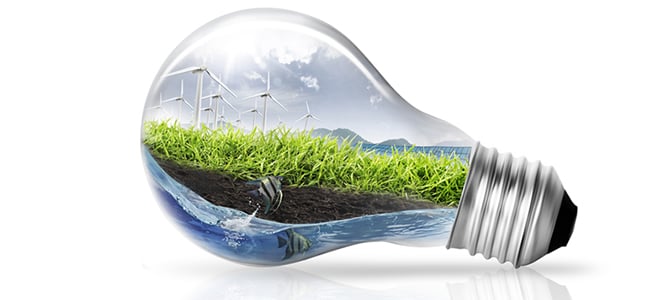Taking care of the environment is a responsibility that everyone should feel accountable for. Most of us are already aware of environmentally friendly processes such as recycling to minimize the amount of waste we produce and reduce our carbon footprint. However, a lot of people are unaware of new and upcoming technologies that we can use to help reduce carbon emissions. A good example of this is LED lighting, which provides many environmental advantages.
Energy Efficient
LED lights are up to 80% more efficient than traditional lighting such as fluorescent and incandescent lights. 95% of the energy in LEDs is converted into light and only 5% is wasted as heat. This is compared to fluorescent lights which convert 95% of energy to heat and only 5% into light! LED lights also draw much less power than traditional lighting; a typical 84-watt fluorescent can be replaced by a 36 watt LED to give the same level of light. Less energy use reduces the demand from power plants and decreases greenhouse gas emissions.

No Toxic Elements
LED lights contain no toxic elements. Most offices currently use fluorescent strip lights which contain noxious chemicals such as mercury. This will contaminate the environment when disposed of in landfill waste. Disposal has to be arranged through a registered waste carrier so switching to LED avoids the cost and time implications required for compliant disposal – and helps to protect the environment from further toxic waste.
Fewer Lights Needed
LEDs have a better quality of light distribution and focus light in one direction as opposed to other types of lighting which waste energy by emitting light in all directions, often illuminating areas where light isn’t required (such as the ceiling). This means that fewer LED lights are needed to achieve the same level of brightness given off by fluorescents and incandescent lights. Fewer lights will reduce energy consumption and will therefore be a benefit to the environment.
Lifespan
A longer life span means lower carbon emissions. LED Lights last up to six times longer than other types of lights, reducing the requirement for frequent replacements. This results in using fewer lights and hence fewer resources are needed for manufacturing processes, packaging materials, and transportation.
About the Author: Alex Connell, Public Relations Officer at LED LightSense. Alex builds a good reputation for the organization and manages its relationship with the public. He is also a writer promoting the environmental and performance benefits of LED lights.


